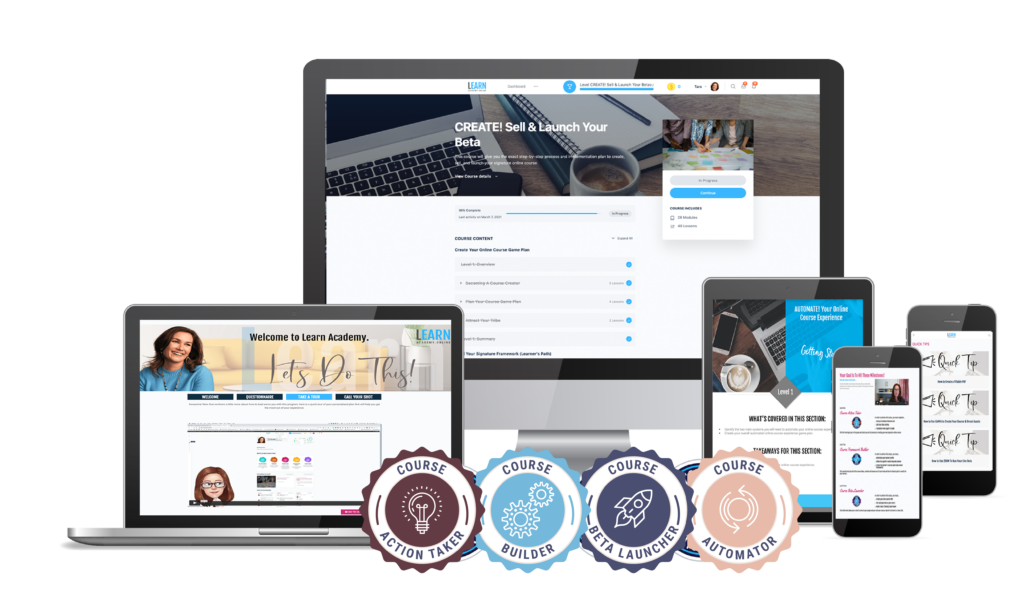The Invisible Ceiling of Service-Based Businesses
Your skills are valuable. You’re brilliant at what you do. Customers love your work. But right now, your business model is a golden handcuff—the more successful you become, the more time you’re required to invest, and growth feels like an impossible dream. Each new customer brings excitement—and exhaustion. The traditional service model is fundamentally broken. When your business runs solely on your personal time and effort, you’re not building a business—you’re creating an elaborate job that owns you, rather than a business you own.
Imagine a different path. A strategy that allows you to package your expertise into assets that:
- Generate revenue without constant direct involvement
- Multiply your impact beyond individual customer interactions
- Create a business that can grow exponentially
That’s the promise of an Authority Strategy.
An Authority Strategy requires more than tactical changes—it demands a fundamental mindset shift. You’re not just delivering a service. You’re building a scalable ecosystem that can generate value independently from your time.
Why Scaling Requires an Authority Strategy
The biggest challenge to scaling is the belief that you must be personally involved in every step to maintain relationships and quality of service. This mindset keeps many experts trapped in one-on-one work, limiting their growth potential. But in reality, an Authority Strategy allows you to create a repeatable, high-quality experience that maintains impact while freeing up your time. By shifting your one-on-one model into a scalable methodology, you increase your reach, streamline customer success, and make your business more sustainable. Your expertise is valuable and your time shouldn’t be the bottleneck to scaling it.
The Authority Strategy: Your Escape Route
Breaking Down the Strategy
1. Recognize Your Unique Expertise
The first step is truly understanding what makes you exceptional. This isn’t about generic skills—it’s about your specific methodology, your unique way of solving problems. For many service providers, this expertise feels intuitive. It’s so natural to you that you might not even recognize how distinctive your approach is. But that’s precisely where your gold mine lies.
Before creating a framework, you need to clearly define your expertise and understand the step-by-step process you guide customers through. Many experts deliver results without documenting their process, making it difficult to scale. The first step is recognizing patterns in how you help customers and identifying the essential steps that drive results.
Quick Tip: Look at industry standards as a baseline and then refine based on your unique approach. What differentiates your process from others? What steps do you consistently take to ensure success?
Example: A leadership coach might notice that every successful engagement follows a structure—assessment, goal-setting, strategy development, execution, and review. Recognizing this and recording their process for delivering that structure allows them to define a roadmap that can be scaled.
2. Transform Expertise into a Repeatable System
Imagine if you could package your magic—your specific way of solving customer problems—into a roadmap that others could follow. This isn’t about creating a one-size-fits-all solution, but a flexible methodology that captures the essence of your unique approach and guides your customers through a predictable process that leads them to the solution to their problem.
Once you’ve identified your expertise and core process, it’s time to package it into an Authority Strategy. This means structuring your knowledge in a way that allows customers to achieve results without requiring one-on-one interaction at every step.
Quick Tip: Break down your process into logical steps that can be taught, automated, or delivered in a group setting.
Example: A marketing consultant shifts from custom strategy sessions to a step-by-step marketing playbook customers follow, supported by group coaching or online content.
3. Integrate Existing Customers into Your Authority Strategy
Transitioning to a scalable model doesn’t mean abandoning your current customers. Instead, it’s about identifying where they fit into your evolving Authority Strategy and introducing them to the new structure in a way that supports their progress.
Quick Tip: Map your current customers onto the Authority Strategy pathway—where would they naturally fit? Would they benefit from group support, structured training, or a repeatable process that scales with their needs?
Example: A copywriting coach transitioning from custom one-on-one reviews to a scalable model might offer existing customers access to a structured training program with personalized feedback checkpoints instead of fully customized edits.
4. Create Reusable Assets to Deliver Your Authority Strategy
To scale effectively, you need assets that allow customers to move through your Authority Strategy without you being involved in every step. This could be structured content, templates, guides, or self-paced resources that supplement live support while ensuring quality and consistency.
Quick Tip: Identify the core knowledge you repeat most often and package it into assets that can be delivered at scale. Think guides, frameworks, pre-recorded trainings, or interactive workbooks.
Example: A leadership consultant who typically explains the same leadership principles to every customer creates a comprehensive leadership training series that customers can access anytime, freeing up time for more advanced, high-value interactions.
The Benefits of an Authority Strategy
By implementing a structured approach, you increase customer success while reducing the time required for direct service delivery. Here’s how an Authority Strategy benefits both you and your customers:




Key Takeaway: Scaling doesn’t mean doing less for your customers—it means creating structured solutions that deliver results efficiently.
Scaling isn’t about giving up control—it’s about creating systems that allow you to grow beyond hours-for-dollars without compromising the customer experience. By defining your Authority Strategy, shifting from one-on-one services, and leveraging smart tools, you can build, grow and scale a high-impact business that runs effectively without your constant attention and time.


Our Host
Tara Bryan is on Instagram | Facebook | Linkedin
Website is: www.Taralbryan.com
Hey, it’s your host, Tara Bryan. And I am on a mission to help more business owners learn to infinitely scale their businesses by leveraging the power of online without sacrificing the customer experience or results.
I like to geek out on all things business strategy, marketing, interactive digital and user experience. This podcast is all about what is working, lessons learned and actionable tips to create and grow a thriving online business.
Join us each week as we dive into different strategies, tactics and tips you can apply immediately to your business.
Key Topics:
The 1:1 Services Struggle | Authority Strategy | Strategies For Scale
Highlights
- A repeatable Authority Strategy is the key to business scalability.
- How to package your expertise into structured, scalable solutions.
- The balance between Done-for-You, Done-with-You, and self-paced offers.






